Adding a Design Wall Behind My Longarm Machine

Unusable Wall Space
Since moving into our house over four years ago, I had accepted the fact that I would not have a design wall in my long, narrow sewing room (18.5' long x 10.5' wide). I felt lucky enough to have a space to accommodate my 12-foot longarm frame with some room to spare. In order for the huge machine to fit, it had to be positioned in front of the only wall that could have functioned as a design wall-wall. If I had to choose, I would had given up a design wall any day to have easy access to my longarm. It was a no-brainer.
Possible Solution
But, what if I didn't have to choose?
In mid-November of last year, I had an idea that would make the wall behind my longarm machine useful.
Furniture sliders.
I bought the product pictured below from Amazon (affiliate link.)

Please note, these are for hardwood floors, so if you have a different flooring surface, another variety of slider might work better for you.
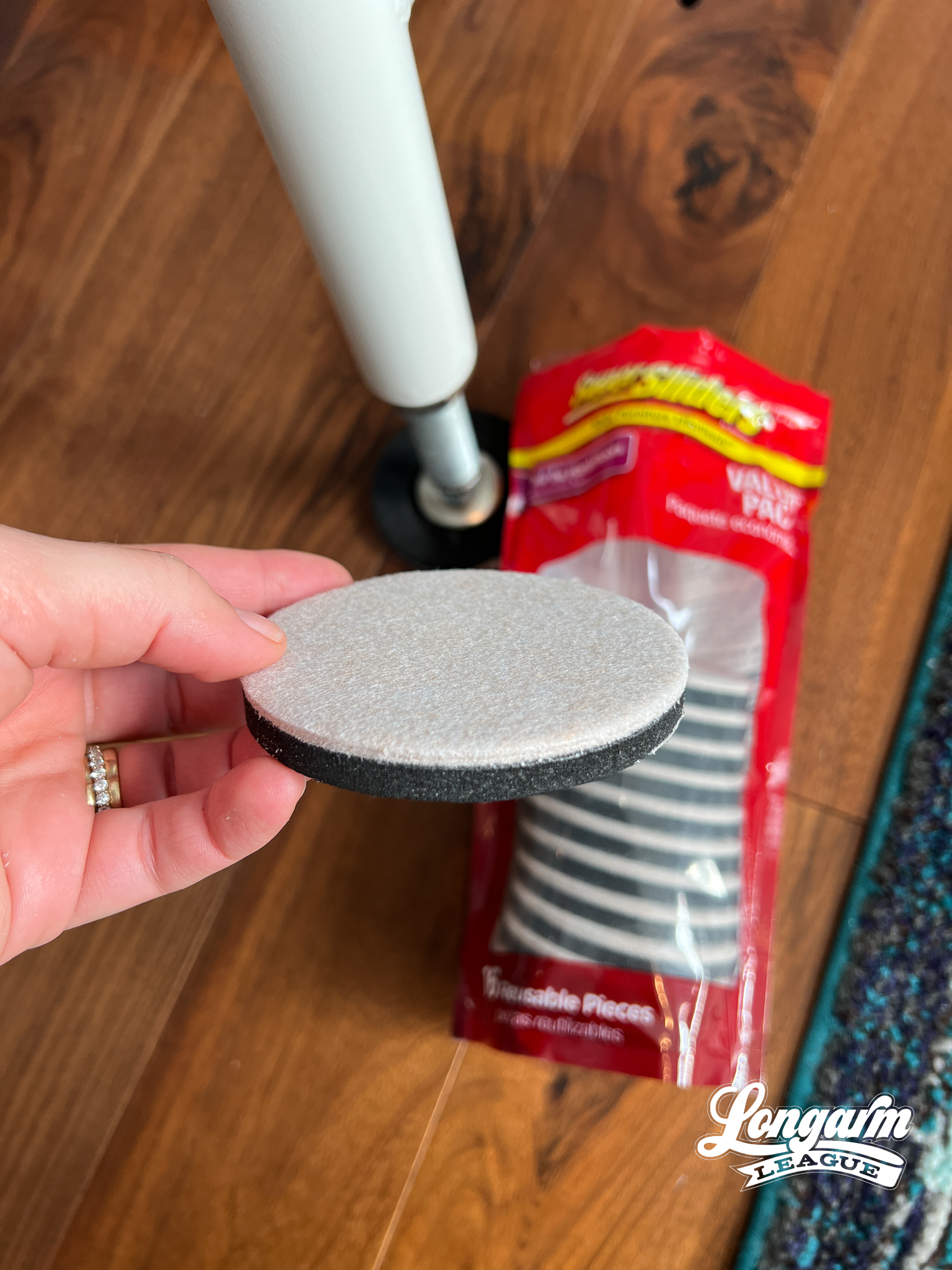
The picture above shows the layer that's against the floor. Th...
Pluma Digital Quilting Design on the 2023 Stronger Together Quilt
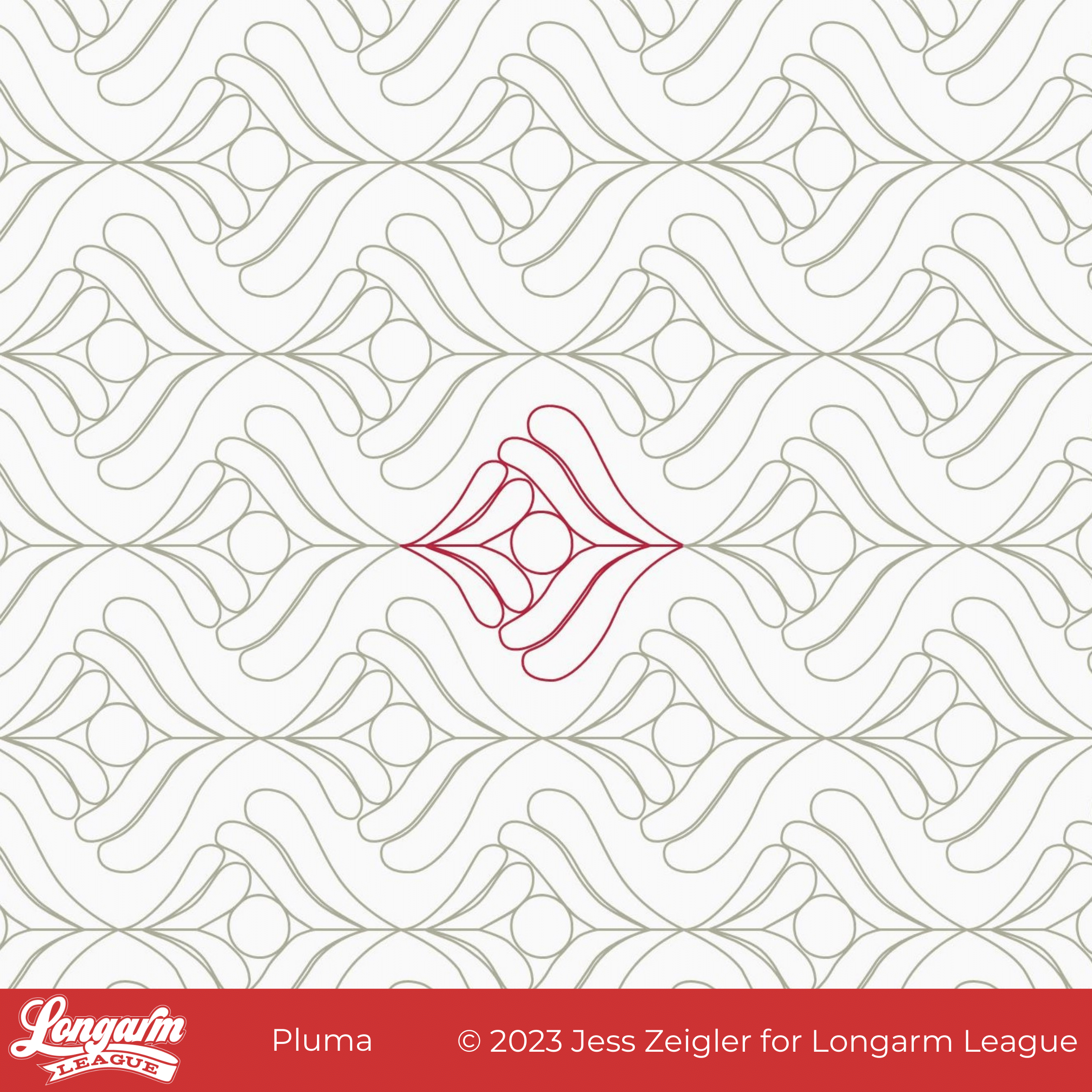
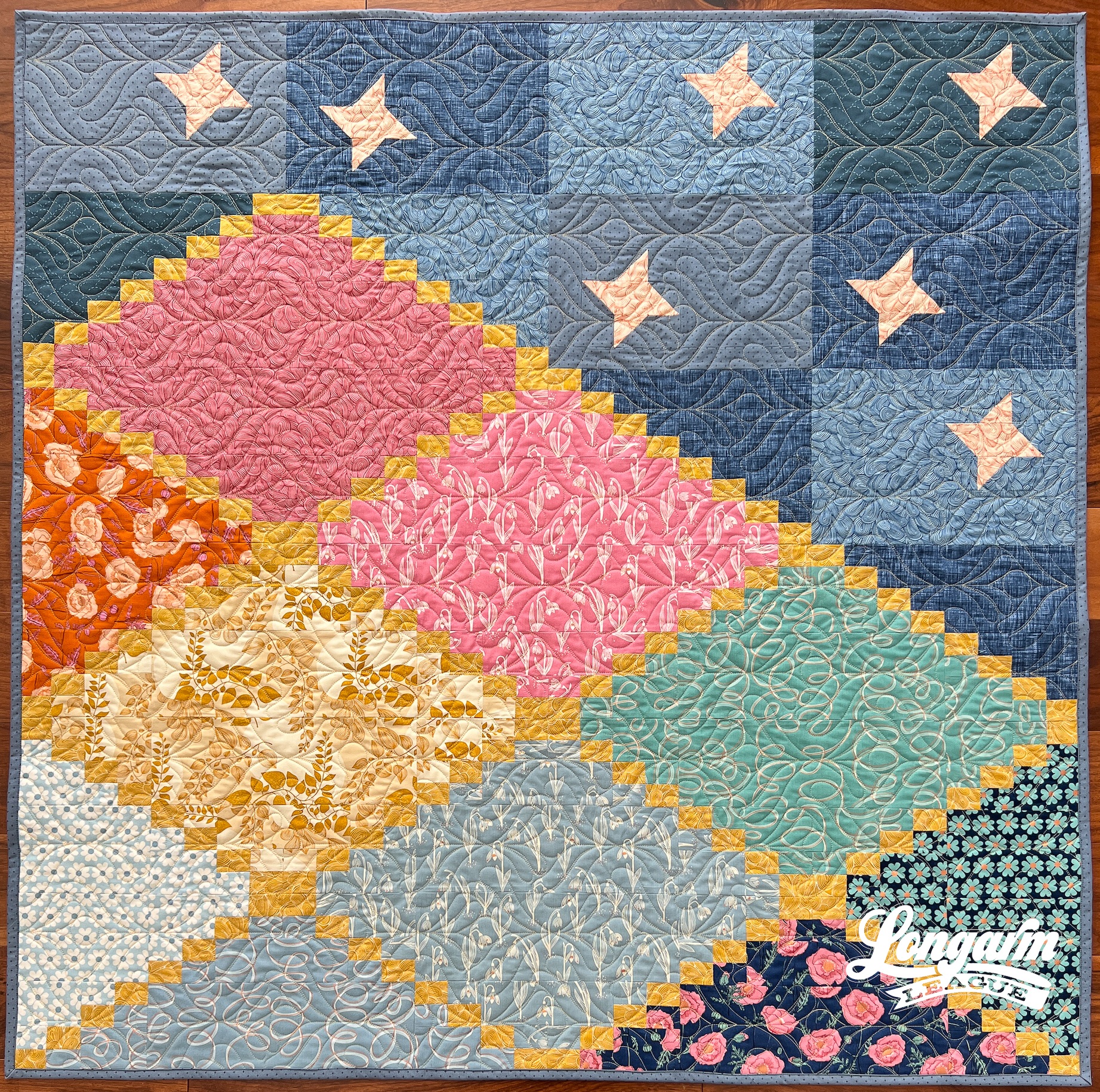
This is Pluma! Not only was it on display in our booth at QuiltCon last weekend, but it was the most popular quilt in our booth! More on the pattern later in this post.
Pluma is a unique digital panto in that it features feather plumes going against each other in each repeat. It's almost as if the larger couplet of plumes swallows the smaller couplet. It makes for interesting movement.
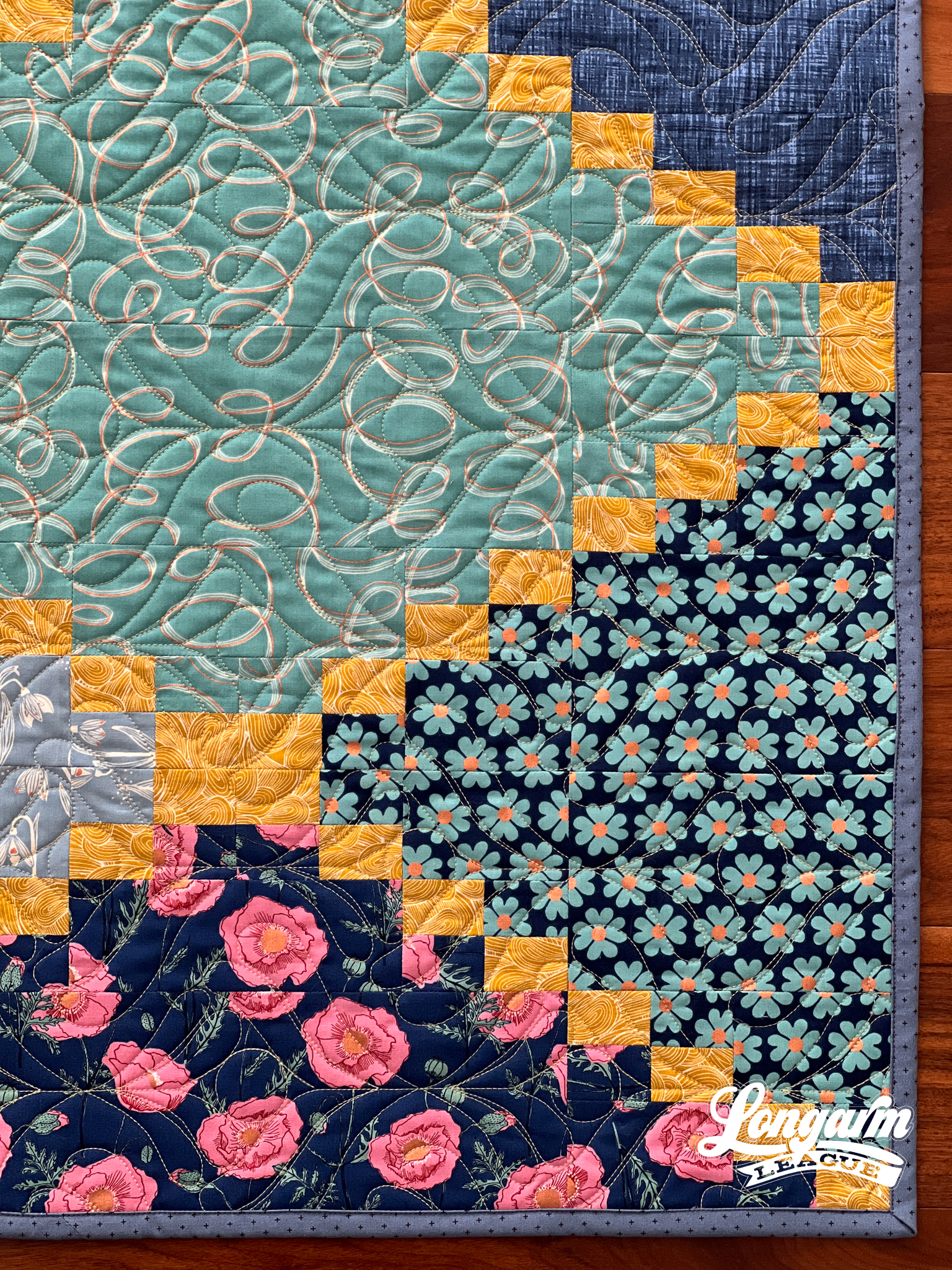
As a way of connecting the two halves of the design, there's a circle in the center of the motif. This provides another interesting textural element.
The plumes are stitched out individually with each plume nestled closely with its neighboring plume. While there is some minimal backtracking/overstitching in the design, it does not occur in the feathers.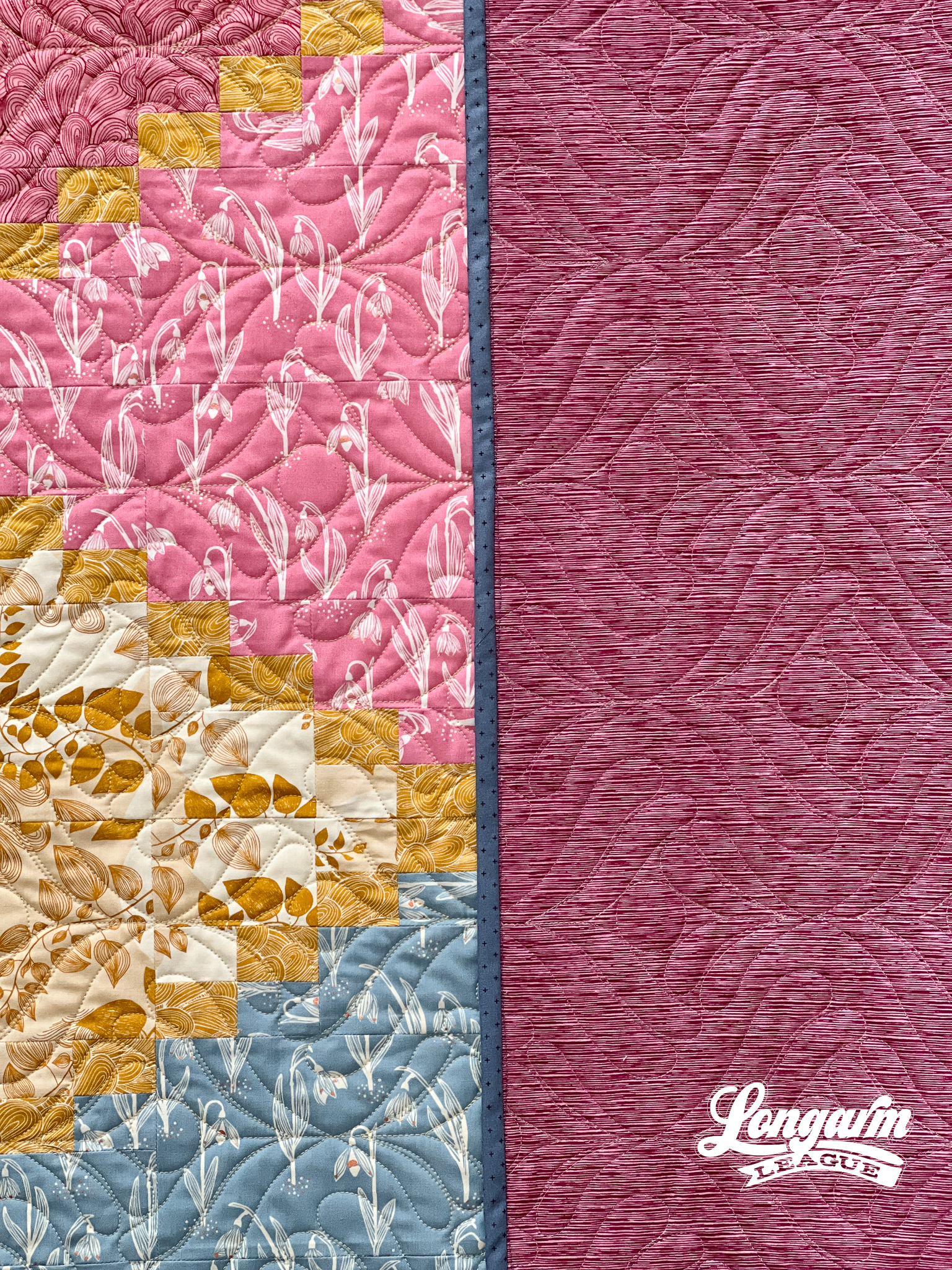
The Quilt Design
I used the 2023 Stronger Together Quilt designed by Michelle Ramsay of Quilts Made with Love. She hosted the Quilt Along for this last month during Black History Month. This pattern can be downloaded with a donation to ...
Meet Meghan Morris of A Piece of Quiet Quilts
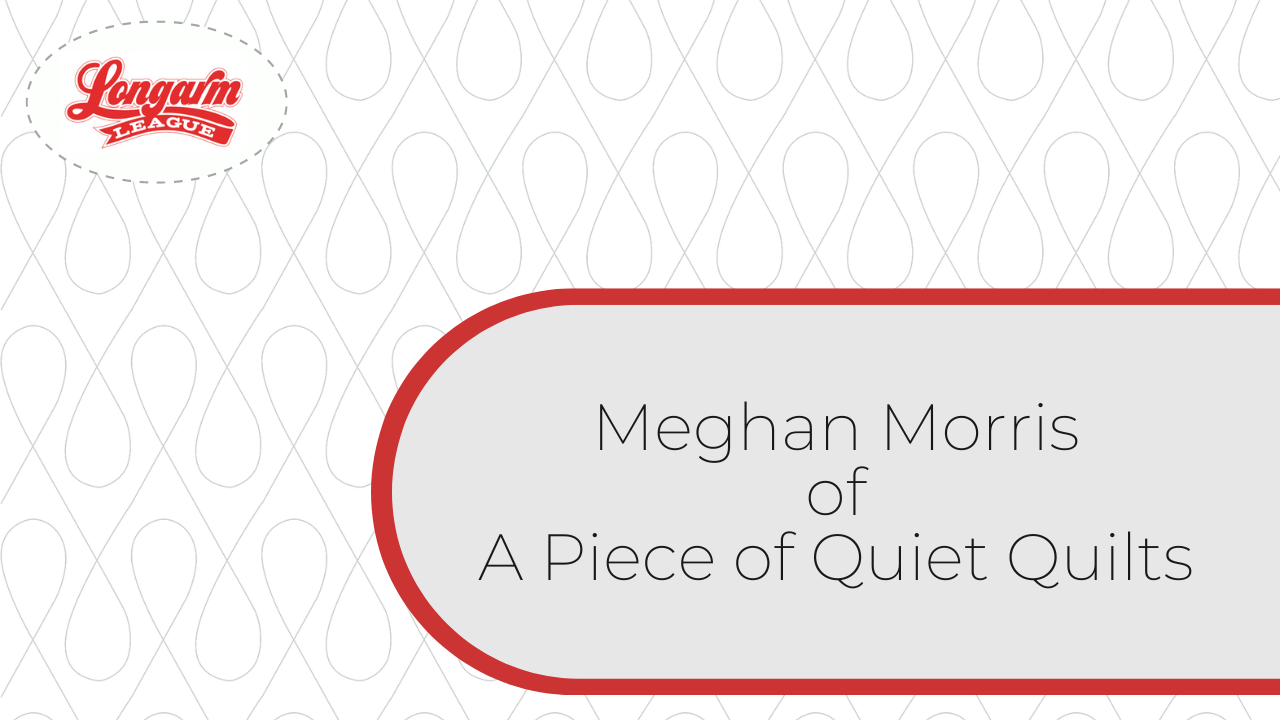
Each month in the Longarm League, we hold a coaching call with one of our members to talk about their business. This month I sat down with Meghan Morris of A Piece of Quiet Quilts. We talked about the work she's put in building her business over the past year, smart branding, the recent release of her second quilt pattern, and prepping for Quiltcon!
While League members have full access to the recording of the call, we asked Meghan to share a little more about herself and her business with our blog readers.
Without further ado, let's meet Meghan...

Meghan Morris, A Piece of Quiet Quilts
Located: Durham, NC
In business: Just over one year!
Machine and software: APQS Lucey with Intelliquilter
In the Longarm League: 1.5 years - I joined the Summer 2022 Rookie Season cohort
Where to find Meghan
Website: https://www.apieceofquietquilts.com/
Instagram: @apieceofquietquilts
Best way for someone to contact you for quilting? I will gladly email with clients if they have questions (especially t...
Seis Edge-to-Edge Digital Quilting Design on my Plaid-ish 2 Quilt

Seis is the word for the number six in Spanish. Based on this design's hexagon shape, I knew I wanted to name it something relating to the hexagon, but I haven't gotten far enough in Duolingo to know the name for hexagon en español yet, so Seis is where I landed.
Okay, Google tells me hexagon is hexágono in Spanish, but now it's too late! I've already committed to Seis.

If you're on our email newsletter list, you might remember me talking about how obsessed I am with Duolingo. I am learning Spanish these days (streak of 57 days, nbd) to augment my high school Spanish education which started some 28 years ago. Ouch! It's one thing to recall the years since high school graduation, but it's another experience to count back to the time you began high school. I wasn't ready for that number!
Anyway, if you are interested in learning another language (they offer courses for 40+ languages), check out their website or download the app. They have a free tier, but I've found the paid f...
White Space Digital E2E Quilting Design
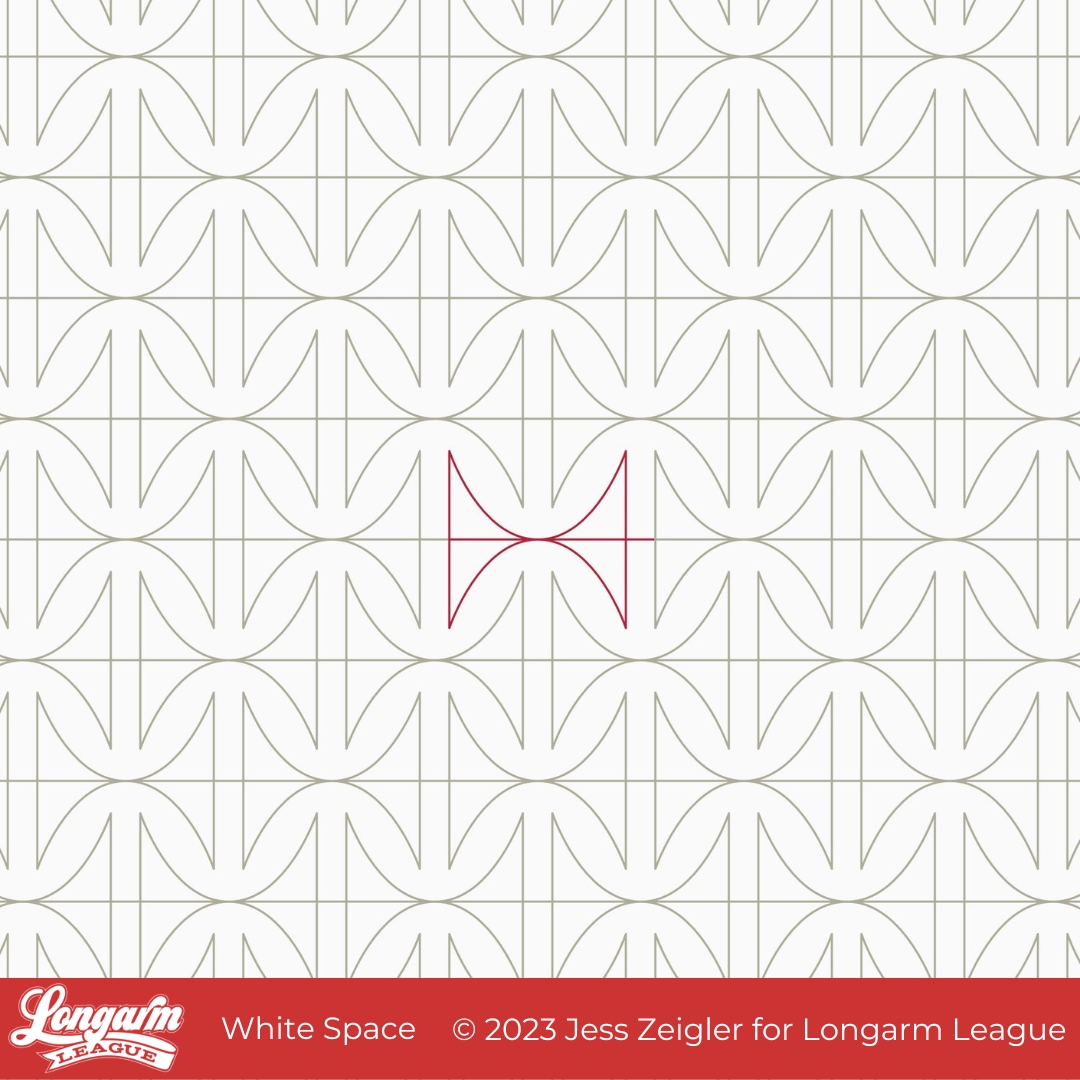
This design is all about the negative space—also known as white space—around the lines. I love how the curvy parts of the design are reminiscent of cathedral window blocks and how the straight lines create channels that provide some contrast to the curvy.

If I didn't design this and wasn't sure where the repeats were, it looks like it could be difficult to line up from row to row. That is definitely not the case! This design is very simple to stitch out. Every other row does need to be offset by 50%, but there is no exact matching necessary anywhere. 

If you stitched this design out on a quilt loaded on its side, you'd see results that play up hourglass or spool shapes. I also see asterisks and orange peel variations if I look at the pattern long enough! :) 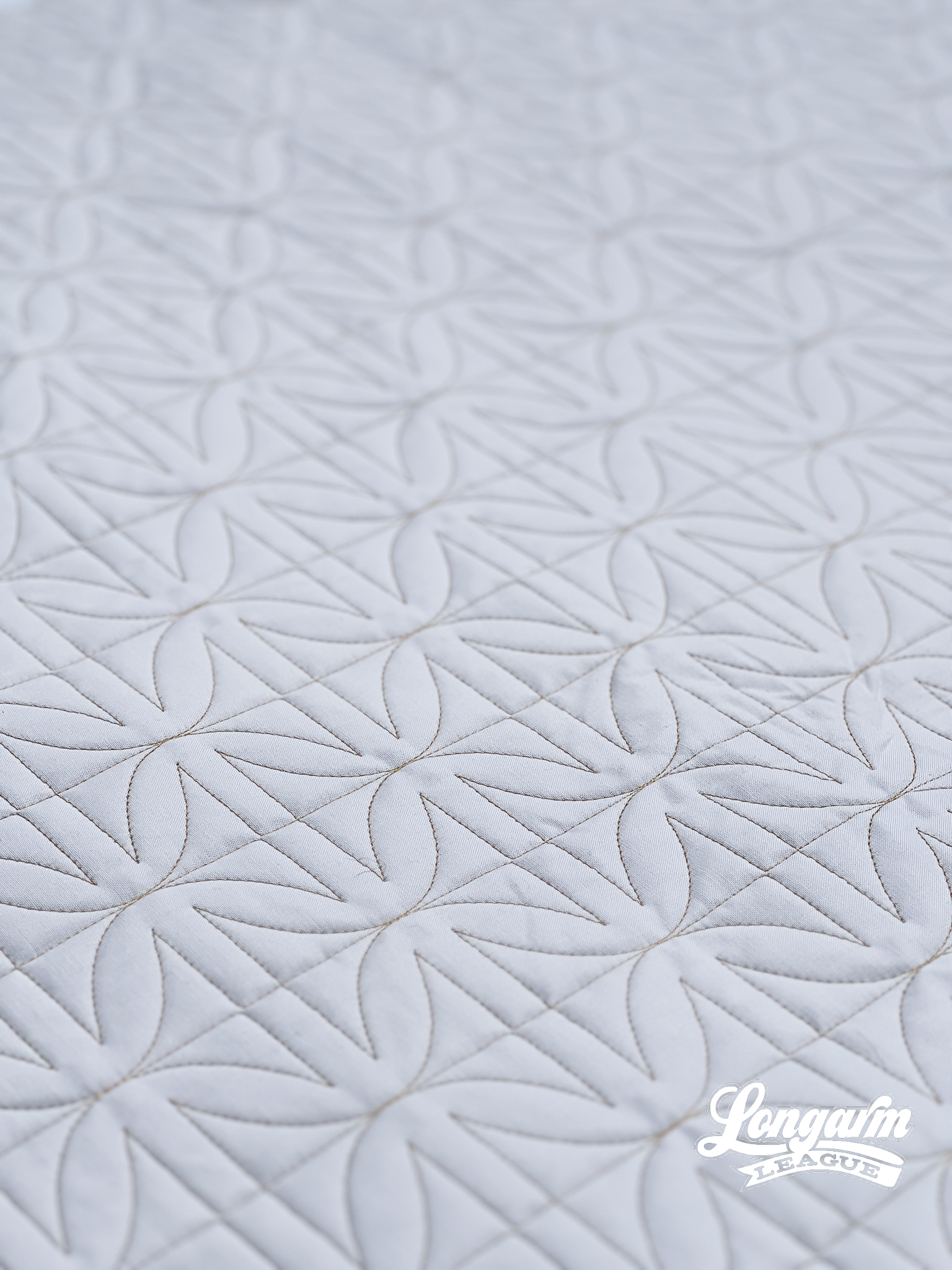
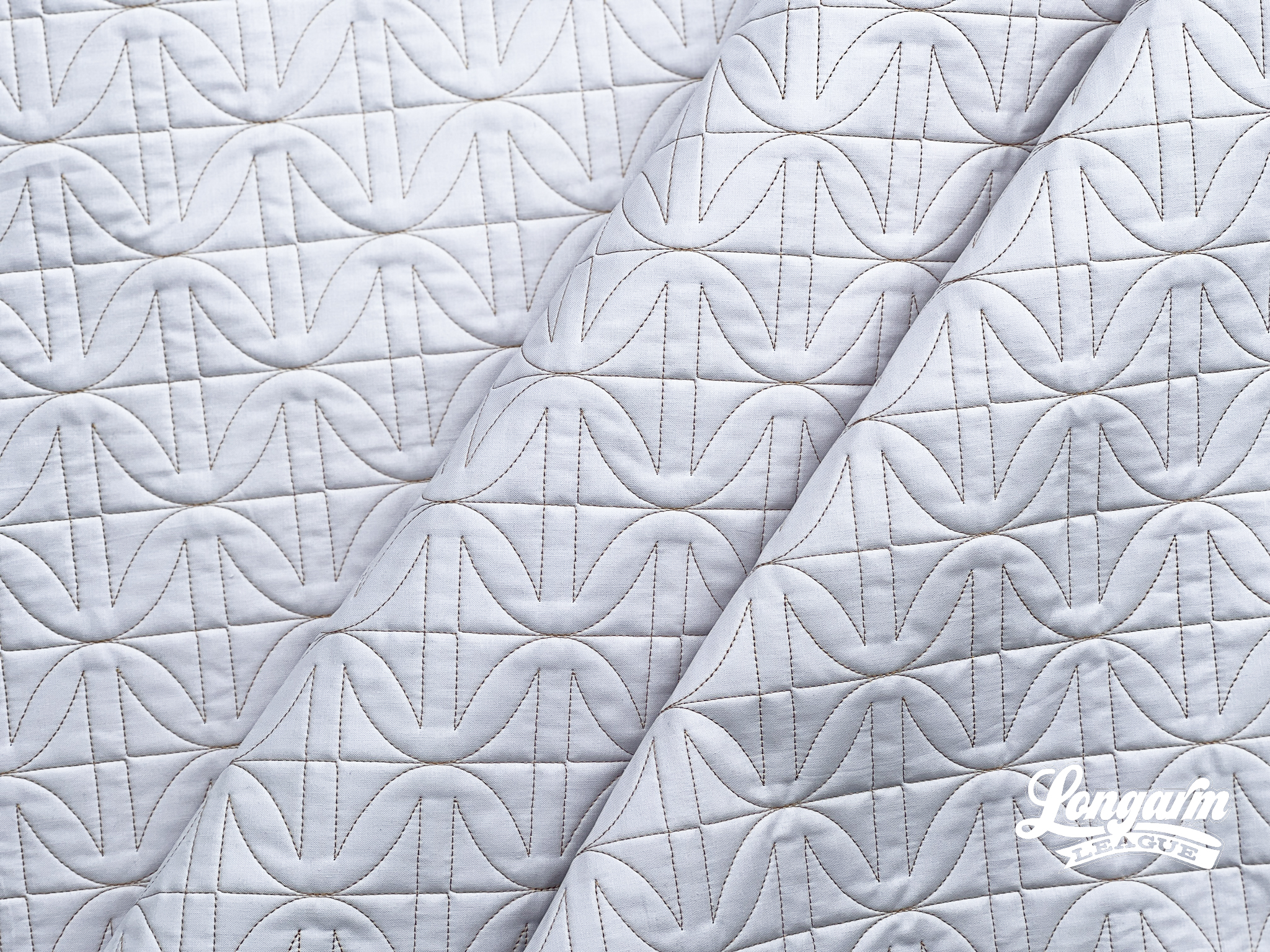

The Technical Details
A video of the stitch path appears at the top of this post. Again, it's a pretty straightforward and simple design with a fluid sequence. On the included PDF, I did indicate "minimal" over...
Fossilized Edge-to-Edge Digital Quilting Design
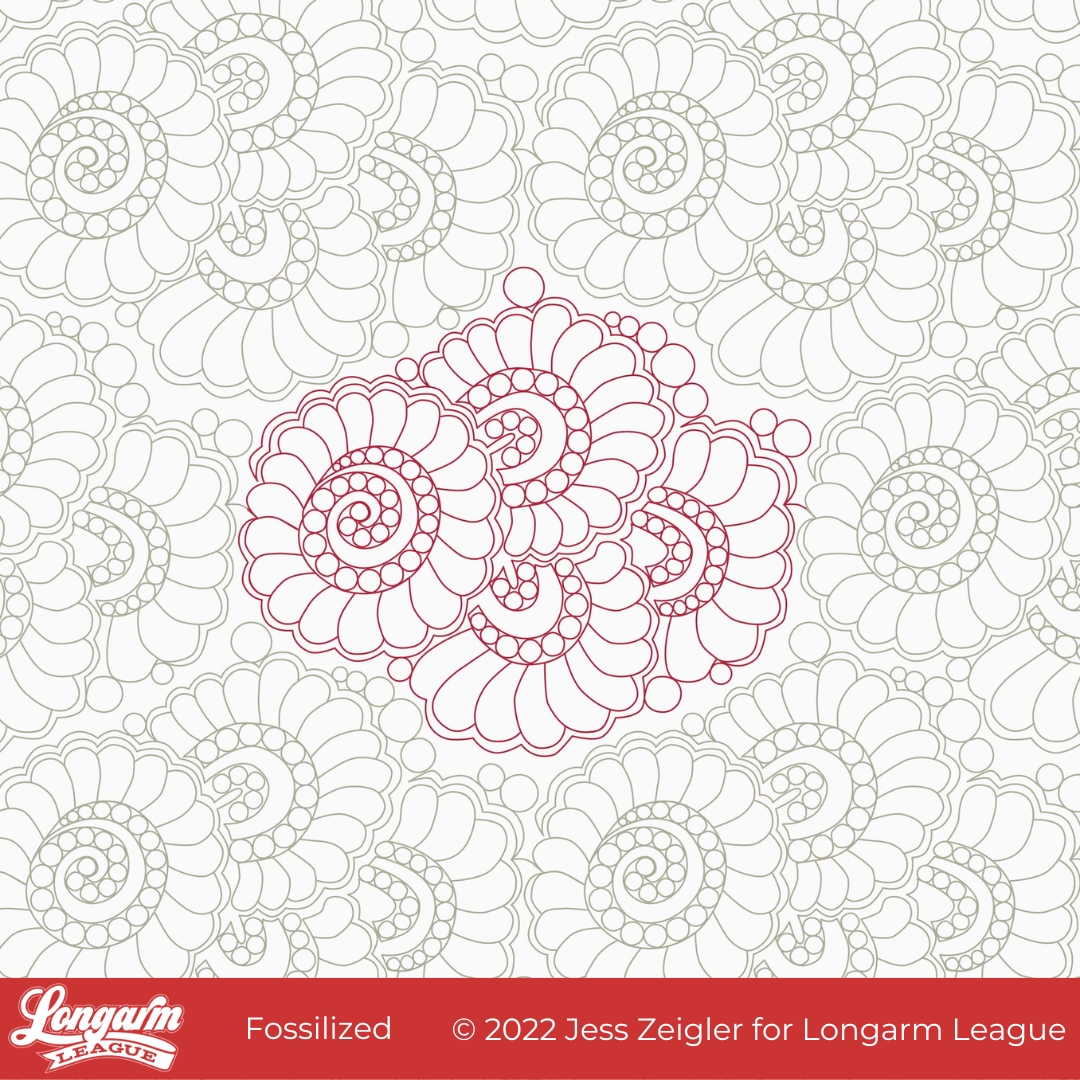
The Background Story
Fossilized is an edge-to-edge design that's been in the works for a long time. In early 2014, I made the small quilt shown below for myself using my own quilt pattern called Star Sighting. It was my first public pattern release under the name Threaded Quilting Studio. Anyway, the quilt used one of my favorite fabric lines ever (Color Me Happy by Vanessa Christianson) and I really wanted to push myself to do something special for the quilting in the negative space.
The quilt above is only 50" x 50" or so, but I remember having to muster the stamina needed to hand-guide all of those dimensional feathered wreaths. :) I thought it took FOREVER, but I was so proud of this quilting motif and thought it worked well in the quilt.
Over the last few years that I've been digitizing designs to be used with a computerized longarm, I've fiddled around with the same motif, struggling with how to make it look dimensional as an edge-to-edge design. The funny thing ...
Driftwood Extended Width Digital Quilting Design
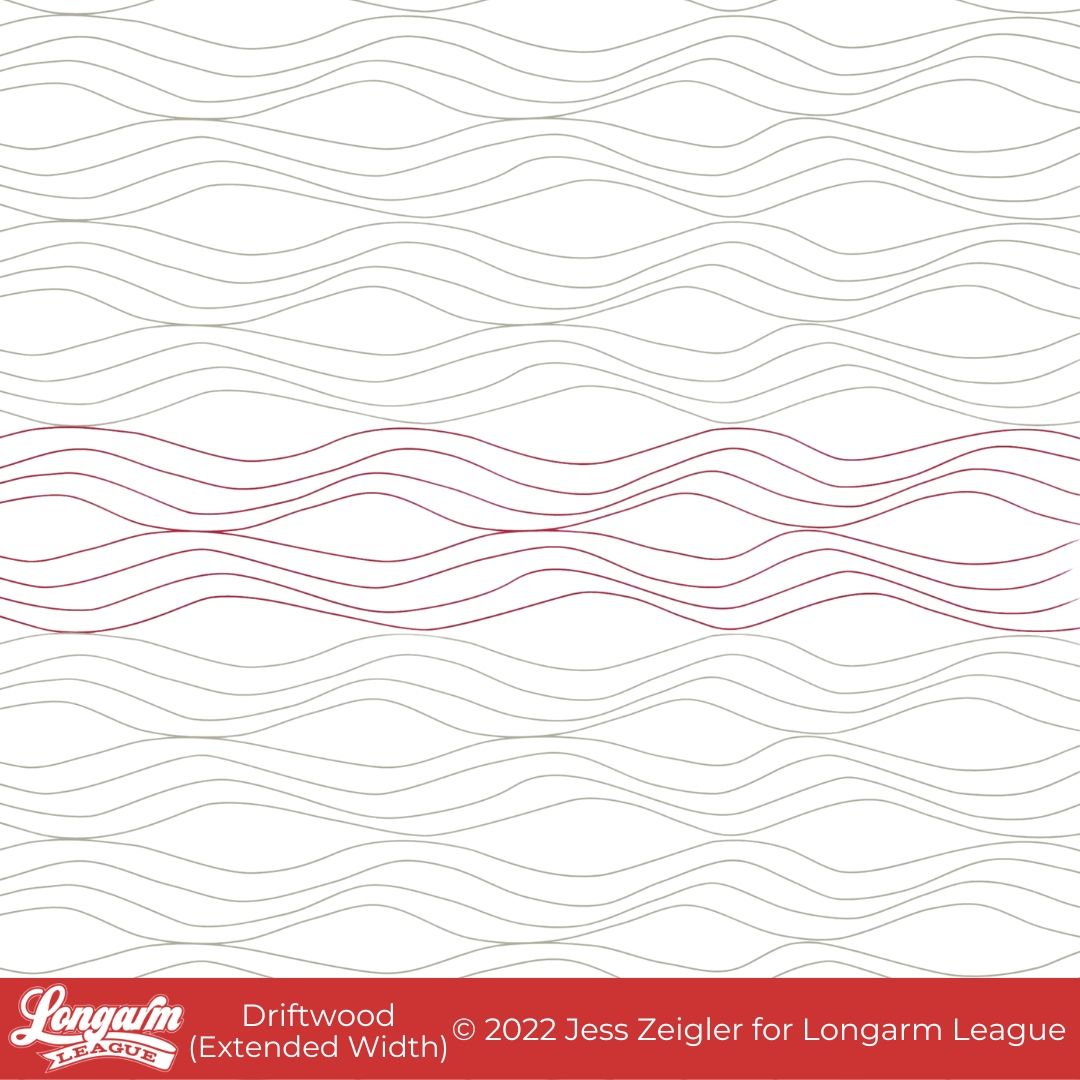
The most important thing to know about our new Driftwood design is that it's an extended width design. This means that instead of a snippet of design that's repeated side by side across the quilt, the design is actually over 100" wide. New to this type of design? You can read more about extended width designs here and see a video of me setting up an extended width design with my Intelliquilter software.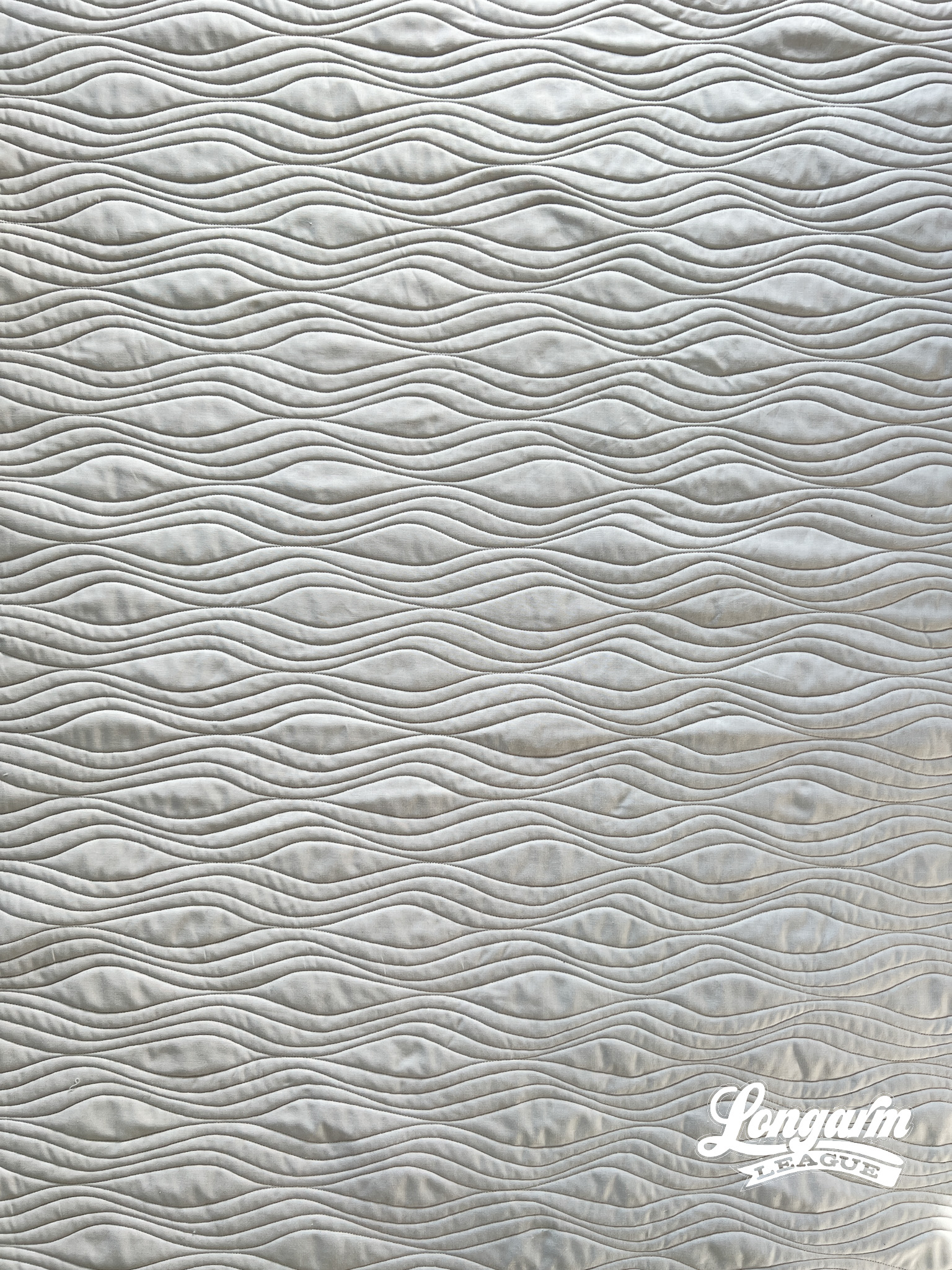
For me, the best part about Driftwood is the organic "pods" of negative space make the texture really stand out.
Driftwood would be a great quilting design to use on a busy quilt because it'll have a unifying effect. I recently pieced together a scrap quilt for which I think Driftwood will be a perfect complement. In fact, I'm planning to load that quilt on its side so that I can get an elongating effect of the lines running vertically on the large throw quilt.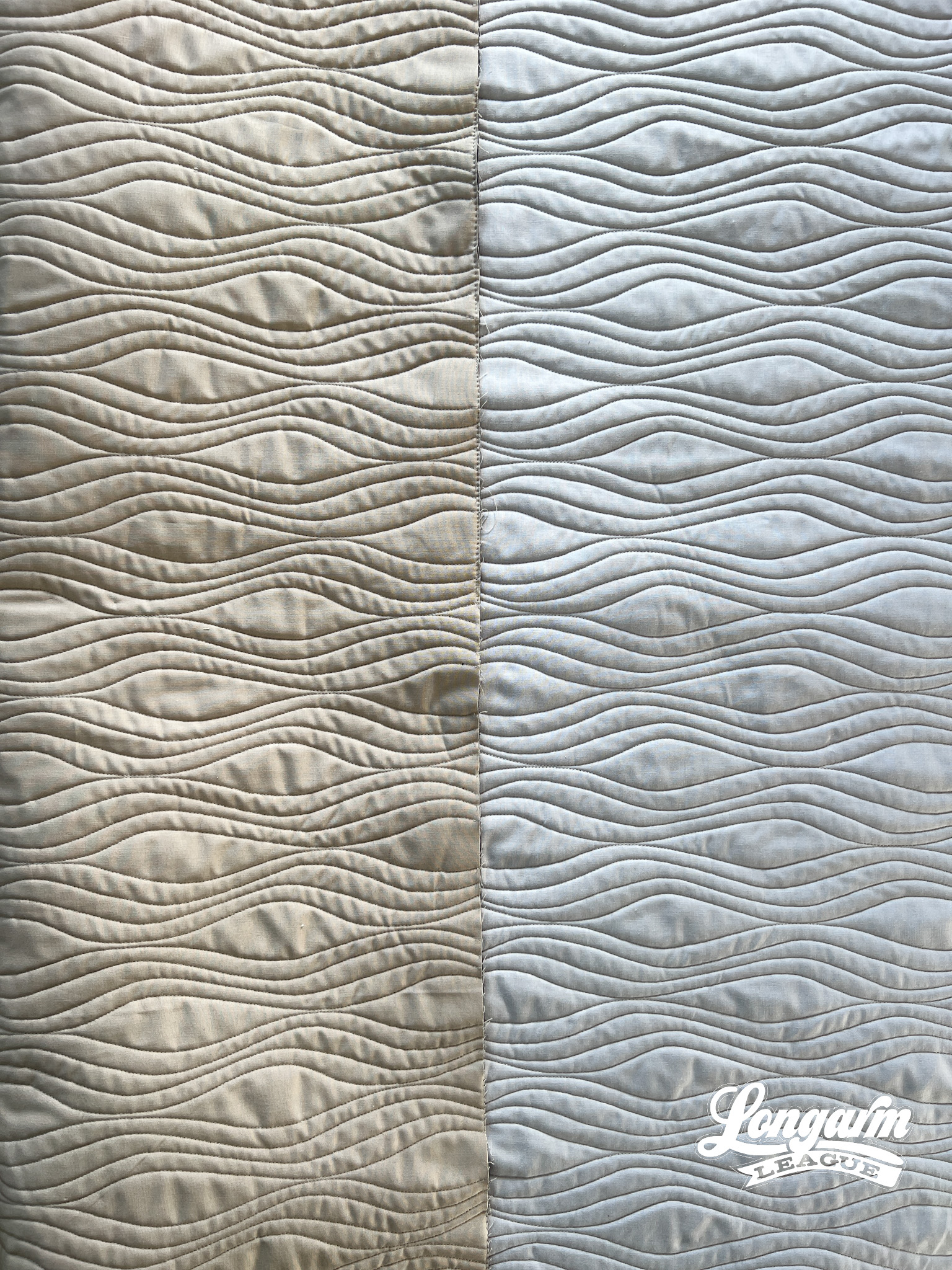
Driftwood would also be great on a nature themed quilt as the organic wavy lines could represent water in addition ...
Moving from Hand Guided to Computerized Longarm Quilting with Terri Neil of Quilting Rubies
Each month in the Longarm League, we hold a call with one of our members to talk about their business. While we typically share those full calls only with League members, we have a treat for you this month, as we're sharing the full replay of our discussion here on the blog!
This month I sat down with Terri Neil of Quilting Rubies, to talk about her recent change from offering hand guided quilting to adding computerized quilting services. We talked about her pros and cons list while she was evaluating whether to make the change, what the learning process has been like, and how the change has positively impacted her and her business.
Without further ado, let's meet Terri...

Terri Neil, Quilting Rubies
Located: Farmington, Maine
In business: 3.5 years
Machine and software: Handi Quilter Avante with Pro-Stitcher
In the Longarm League: 2.5 years
Where to find Terri
Website: https://www.quiltingrubies.com
Instagram: @quiltingrubies
Facebook: QuiltingRubies
Best way for someone to contact yo...
Wishbone Edge-to-Edge Digital Pantograph

Wishbone History
Do you know how long I've been meaning to write a blog post about Wishbone? Well, I started this draft in August of 2020. The design was a few years old by that point.
Wishbone is the first design I ever released to the public in September 2019, mere weeks after the Longarm League membership started for the first time. I designed it the prior year due to the frustration of not being able to find a design simply referred to as 'Loops' by some Statler Stitcher owners I followed on Instagram.
I spent hours combing the Internet with the intent to buy the looped design, but resorted to making a version of my own when I couldn't locate it. This gave me a chance to use my Intelliquilter's editing tools to create the must-have elements that I wanted: 60º angled lines and meaty "teardrop" shapes that would nest with the rows above and below.
The resulting design lived on my tablet for a long while until I bought Art and Stitch software and was able to export it, s...
Working with a Virtual Assistant: Meet our Interview Guests
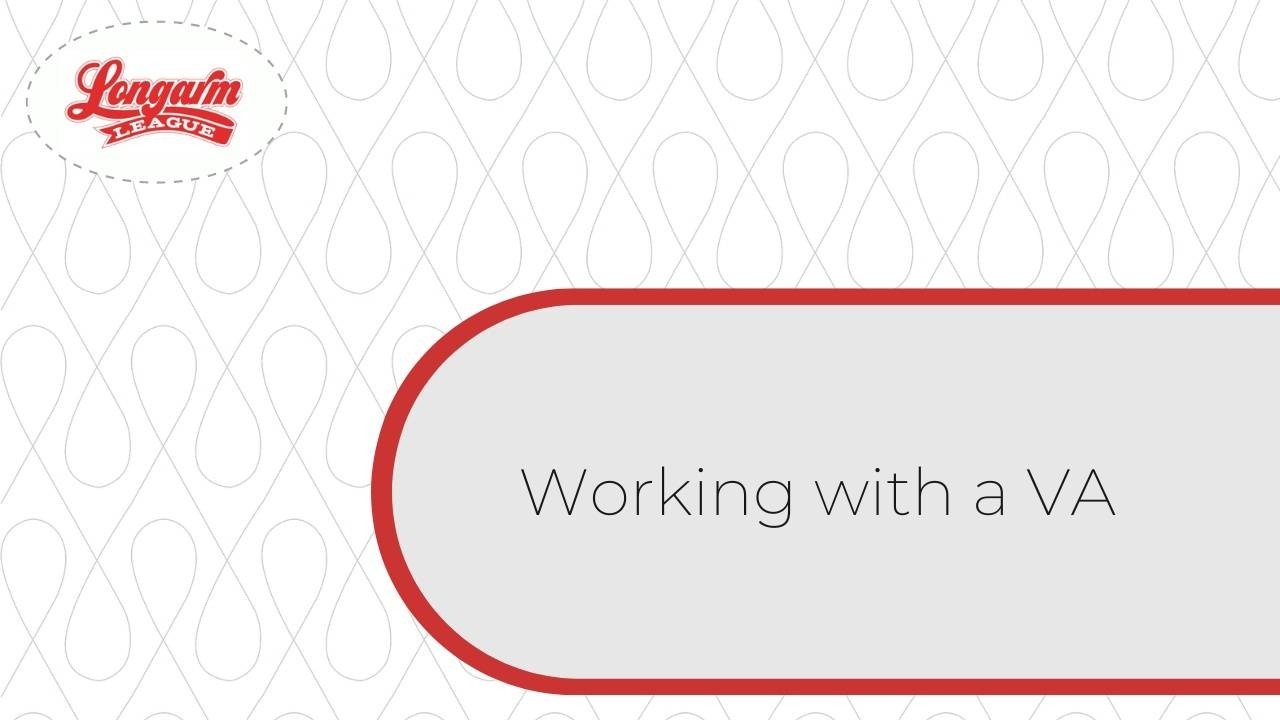
This month I interviewed Chris Batten of Looped Quilting Studio and Erin Case of Birch Tree Creative to talk about the process and benefits of working with a Virtual Assistant as a small business owner. Beginning as quilty friends in real life, Chris and Erin also started to work together professionally when Chris hired Erin as a virtual assistant to help with some of the administrative side of her business so that she could focus more on what she loves - quilting!
We talked about the types of virtual assistants, the ins and outs of hiring and working with one, the costs involved, and the benefits Chris has seen in her business. I loved learning about the virtual assistant world and discussing all the ways a virtual assistant can help and support a business owner, and while the full discussion replay is available for League members, I'm excited to share a few takeaways here on the blog and help you get to know our guests a little better.
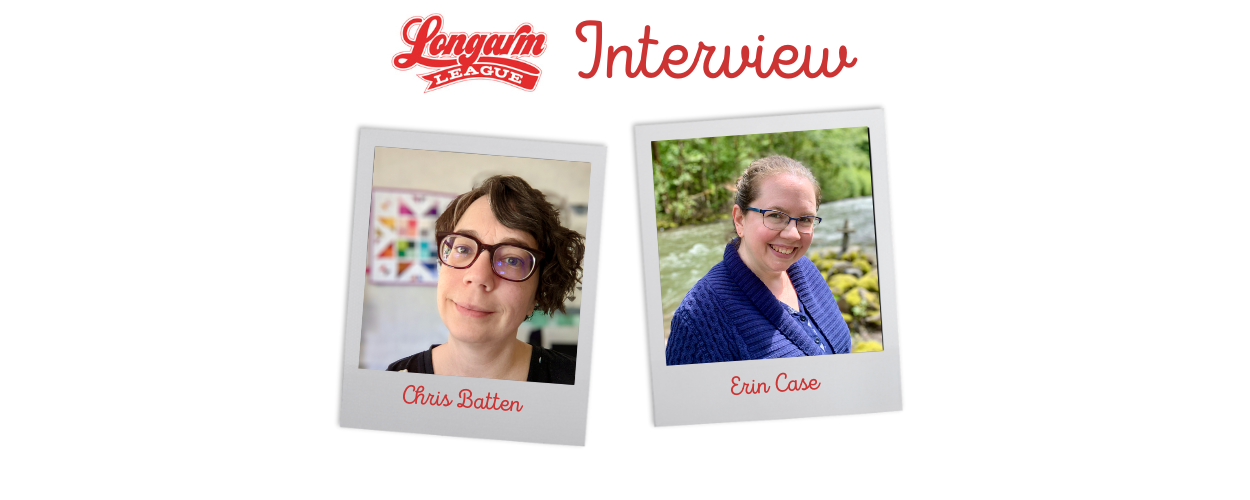
One of the reasons I loved this call with Ch...









